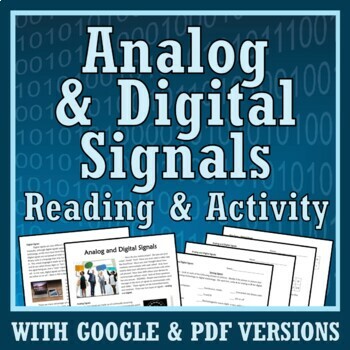Analog and Digital Signals Activity Waves and their Applications in Technology
- PDF
- Google Apps™

What educators are saying
Also included in
- 50% OFF! This is a set of 25+ physical science reading comprehension articles. Each resource includes an engaging physical science article and a corresponding worksheet.⭐ All articles include both print and Google Slides versions!In each of these activities, students will:READ an article related tPrice $54.00Original Price $108.31Save $54.31
- Never search for "something to do tomorrow" ever again! This bundle contains PRINT AND GO lessons, NO PREP activities, LOW PREP labs, and ENGAGING articles to supplement and thoroughly enhance a physical science course. Every included resource is easy to implement, standards-based, and high-quality.Price $399.99Original Price $671.34Save $271.35
Description
Designed with middle school students in mind, this activity simplifies NGSS MS-PS4-3 to essential understandings. After this lesson, students will be able to:
- differentiate between the basics of analog and digital signals
- compare the advantages and disadvantages (including reliability) of each
First, students READ the 2-page article. The reading is clear, straightforward, and written for a middle school audience. Topics include:
- Basics of analog and digital signals
- Devices that use each type of signal
- Advantages and disadvantages of each
Second, students ANSWER text-dependent and analysis questions based on the text.
Third, students GRAPH data points for an analog wave and data points for a digital wave. (The Google version of the activity does NOT include this graphing piece. this is only in the print version.) The graphing is very simple, designed not to be a challenging graphing activity but rather to highlight how the two signals graphs are different. A few analysis questions follow the graphs to bring students' attention to the major characteristics of each wave type.
Both PRINT and GOOGLE versions are included!
Teacher Notes:
- Please note: This resource is NOT editable.
- Answer key included.
- Our Analog & Digital Signals Quiz is a good assessment of this topic.
Related Resources:







